Staff
- Prof. Dr. Gemma Mazzuoli-Weber, PI Tel: +49-511-856-7543 E-Mail
- Kristin Elfers, PhD, Postdoc Tel: +49-511-856-7450 E-Mail
- Pascal Hoffmann, PhD, Postdoc Tel: +49-511-856-7764 E-Mail
- Susanne Hoppe, Technical Assistant Tel: +49-511-856-7356 E-Mail
- Kathrin Hansen, Technical Assistant Tel: +49-511-856-7527 E-Mail
- Kerstin Kiri, Technical Assistant Tel: +49-511-856-7431 E-Mail
- Jolina Enes, Trainee animal care taker Tel: +49-511-856-7345 E-Mail
- Michael Rohde, Animal care taker Tel: +49-511-856-7335 E-Mail
- Yvonne Ambrecht, Animal care taker Tel: +49-511-856-7334 E-Mail
- Sophia Mayr, PhD Student Tel: +49-511-856-7405 E-Mail
- Alina Sehnert, PhD Student Tel: +49-511-856-7405 E-Mail
- Masina Plenge, PhD Student Tel: +49-511-856-7405 E-Mail
Equipment
- 3 Ultrafast-Neuroimaging-Set ups for Live-Cell-Imaging with voltage and calcium sensitive dyes
- Macroscop for wide field Ca2+-Imaging
- Set up for afferents recordings
- 16-Channels-Organ bath
- 4-Channels-Voltage Clamp Ussing Chamber-System
- Immunoflurescence Microscope
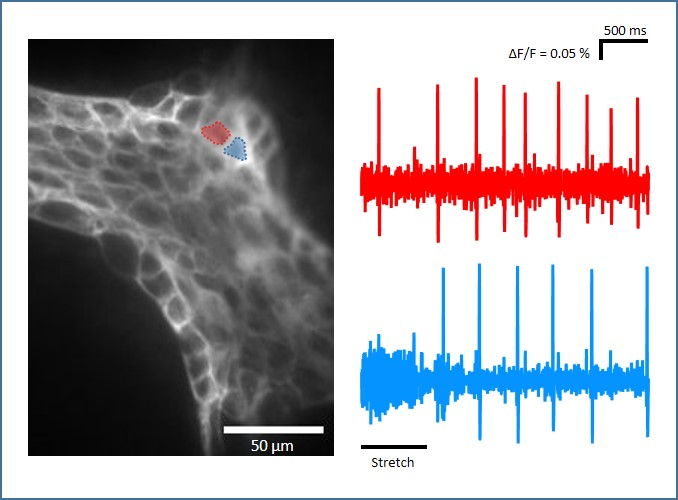
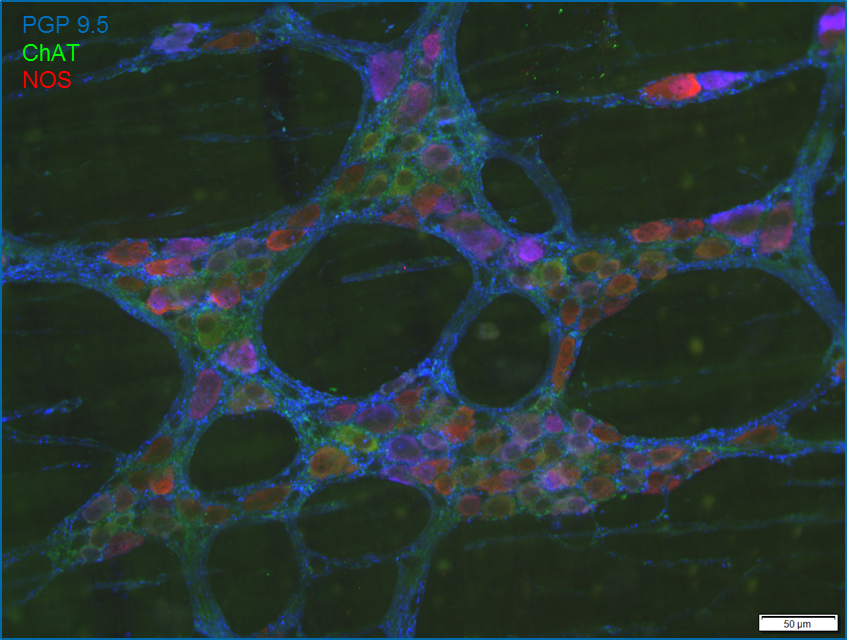
![[Translate to English:] Organ Bad Setup](/fileadmin/_processed_/5/4/csm_OBAll_a8a820c0ca.jpg)
![[Translate to English:] Makroskope](/fileadmin/_processed_/e/4/csm_Makros_504fe3a1ea.jpg)
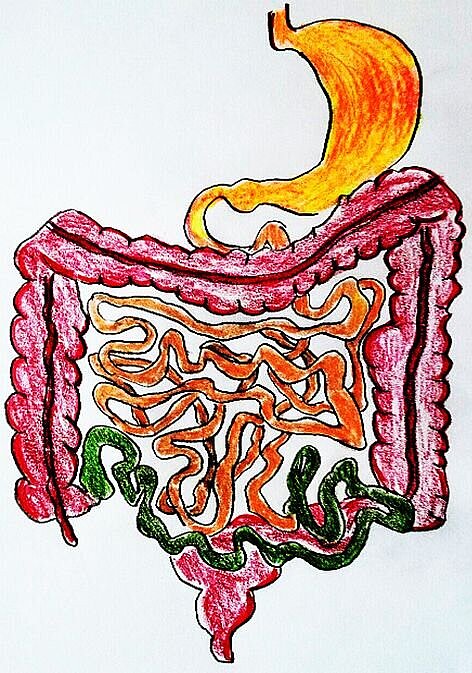
Research
For many years it is known that the enteric nervous system (ENS) can function independently from the central nervous system. It is able to regulate all gastrointestinal functions in isolation. However, precise data on the neuronal circuits involved in the control of those functions are missing.
My research group was able to describe and characterize mechanosensitive enteric neurons. These neurons possess soma and multiple neurites, which have mechanosensitive properties. Moreover we showed that neurites can have both afferent and efferent function. Mechanosensitive enteric neurons (shortly MEN) are multifunctional: they are at the same time able to sense mechanical stimuli and to drive muscle responses, which are the basis of enteric motility patterns. We showed that MEN have different phenotypes, are tension and or compression sensitive and they all receive fast synaptic input. This implies that they are part of a network which activity is highly subject to neuronal and non-neuronal modulations.
The concept of multifunctional MEN is valid across all gastrointestinal regions (stomach, small and large intestine) and species (rodents, human) tested.
Methods
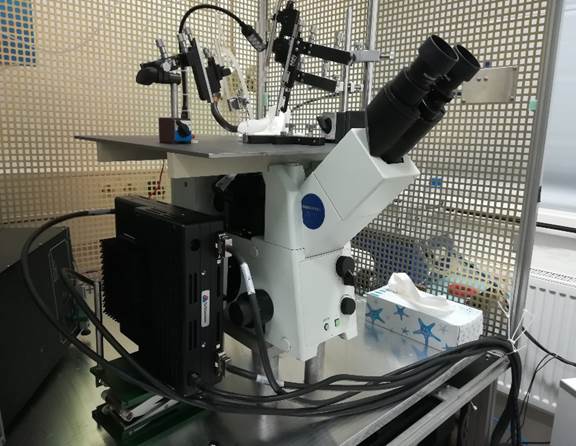
Neuroimaging with calcium and voltage sensitive dyes
Changes in membrane potential and intracellular calcium levels can be registered using voltage and calcium sensitive dyes.
To detect these fast events, cameras with an enormously high (> 1 kHz) frame rate are required. The advantage of using optical methods in neurophysiology lies in the fact that entire populations of neurons can be studied simultaneously and network interactions can be elucidated.
Video of a mechanical stimulation of myenteric ganglion
Video of an intraganglionic injection and consecutive muscle contraction
Tissue preparation: myenteric plexus of the human colon
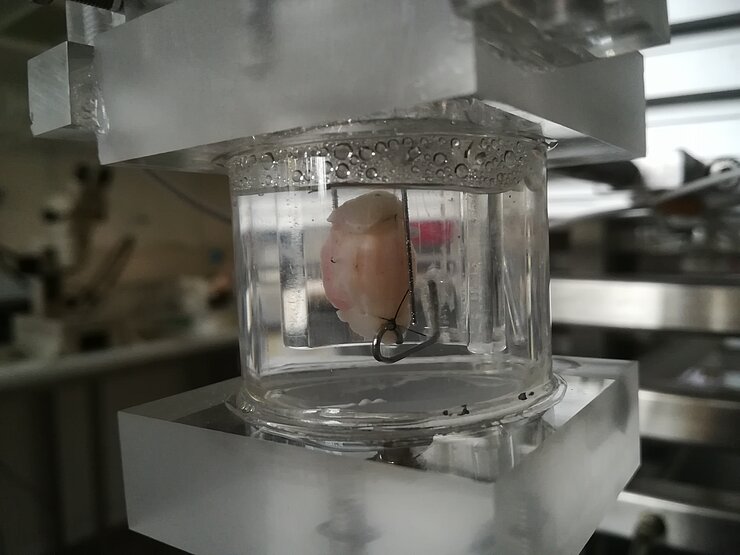
In vitro motility with organ bath
With force transducers the contractility of isolated forestomach, stomach and intestine preparations is examined in vitro. This model is excellently suited for pharmacological studies, whereby 16 separate organ baths can be used at the same time. This method allows to study the effect of different substances on muscle activity under basal and stimulated conditions.
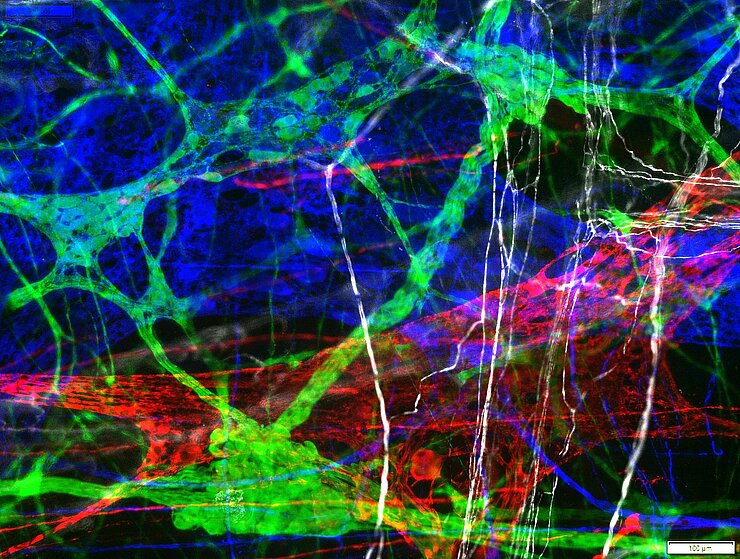
Immunhistochemistry/Immunofluorescence
Enteric neurons express various neurotransmitters that yield the neurochemical code of a cell. This coding characterizes the function of the neurons. Our goal is to fully decode this encoding in the ENS along with the associated cells. With the coding already known, it has been possible to detect and specify plasticity and disease-associated changes in the enteric nervous system.
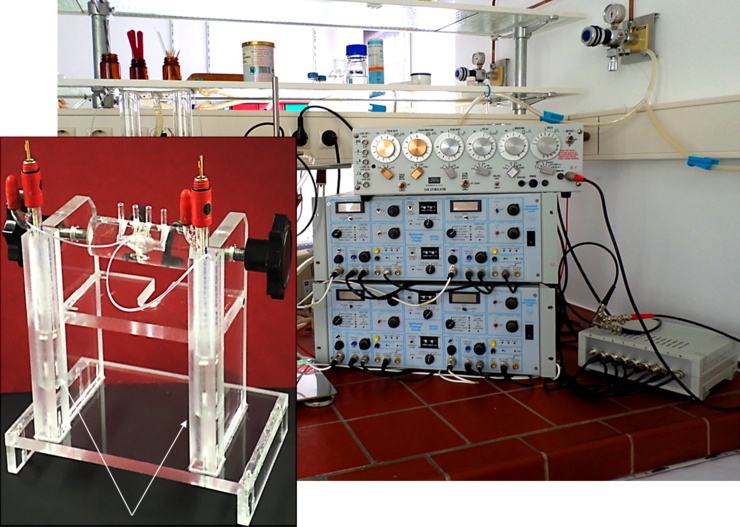
Voltage-Clamp-Ussing Chamber
This technique measure the property of permeability of epithelial tissues. Thus, transport and barrier functions of the living tissue can be detected and quantified.
Through the addition of substances that either enhance or inhibit secretion we can identify cellular mechanisms, neuronal circuits, neurotransmitters and -receptors or ion channels.


